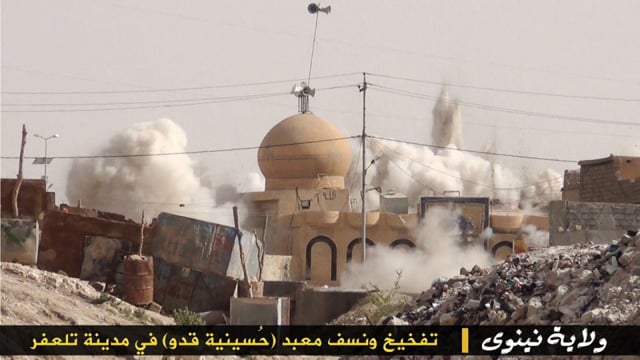Law & Politics
Syria’s Cultural Artifacts Are Blood Diamonds for ISIS
Islamic State's military is funded through sales of looted antiquities.

Islamic State's military is funded through sales of looted antiquities.

The destruction of Syria’s cultural heritage could have even more widespread ramifications than we realize, the Wall Street Journal reports. Christian C. Sahner takes a close look at the motivation behind the widely reported destruction of religious, historical, and cultural sites, arguing that “the nation’s heritage has been used as a weapon to finance bloodshed, to settle sectarian scores, and to erase entire chapters of the country’s past in the expectation of radically reshaping its future.”
As such, Syria’s cultural heritage is not a casualty of war, but a direct target of the ongoing attacks by the Islamic State of Iraq and Syria (ISIS). Looted antiquities from museums and archaeological sites are being traded much like blood diamonds, providing ISIS with millions of dollars in funding to train and arm its fighters, supplementing its even greater income from selling oil and robbing banks (see Is ISIS Bankrolling Terrorist Activities with Stolen Antiquities?). ISIS then ups the profits by heavily taxing looters and smugglers.
Roman mosaics, Palmyrene statues, ancient jewelry, medieval manuscripts, and prehistoric religious artifacts are among the stolen treasures that have been trading on the Syrian black market, finding their way into the homes of private collectors in the Middle East, Europe, and North America.
These other countries have been accused to turning a blind eye to smuggling activities (see Experts Decry British Complacency with Syrian Destruction and Turkey Accused of Turning a Blind Eye to Smugglers of Syrian Artifacts), although there are both nationally and internationally organized efforts afoot to protect historic and religious sites and artifacts (see The Fight to Save Syria’s Cultural History From Ravages of War and US Museums Organize Aid for Syrian Sites).
ISIS is benefiting from its strategy of targeting the region’s cultural properties in other ways, too. Much of the conflict is fueled by sectarian religious hatred, and by destroying shrines, tombs, churches, and mosques, ISIS is escalating the historic divisions between groups such as the Sunni and Shiite (see Are More Monuments Under Threat From ISIS?).
By reducing their enemies’ religious sites to rubble, ISIS seeks to effectively erase history, severing their enemies from their homeland by wiping out their connection to the past in order to create a future in which ISIS and its religious beliefs reign supreme. It’s a brutal war tactic, and one, unfortunately, that appears to be working.